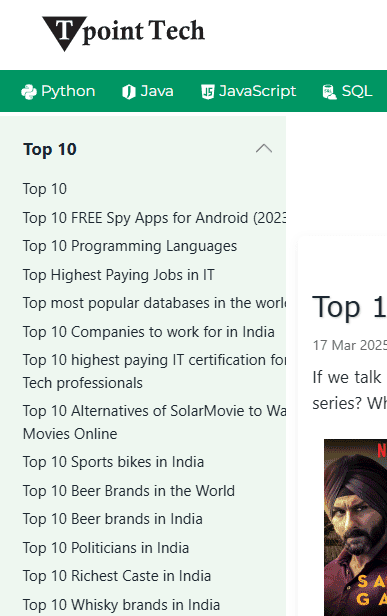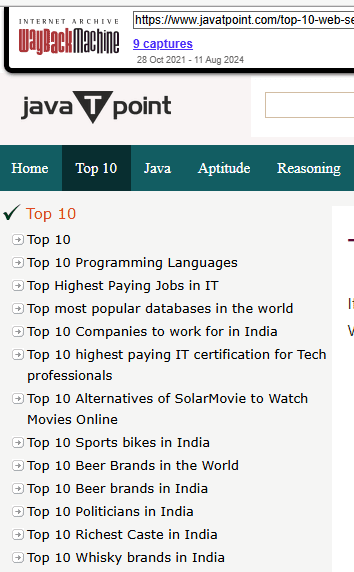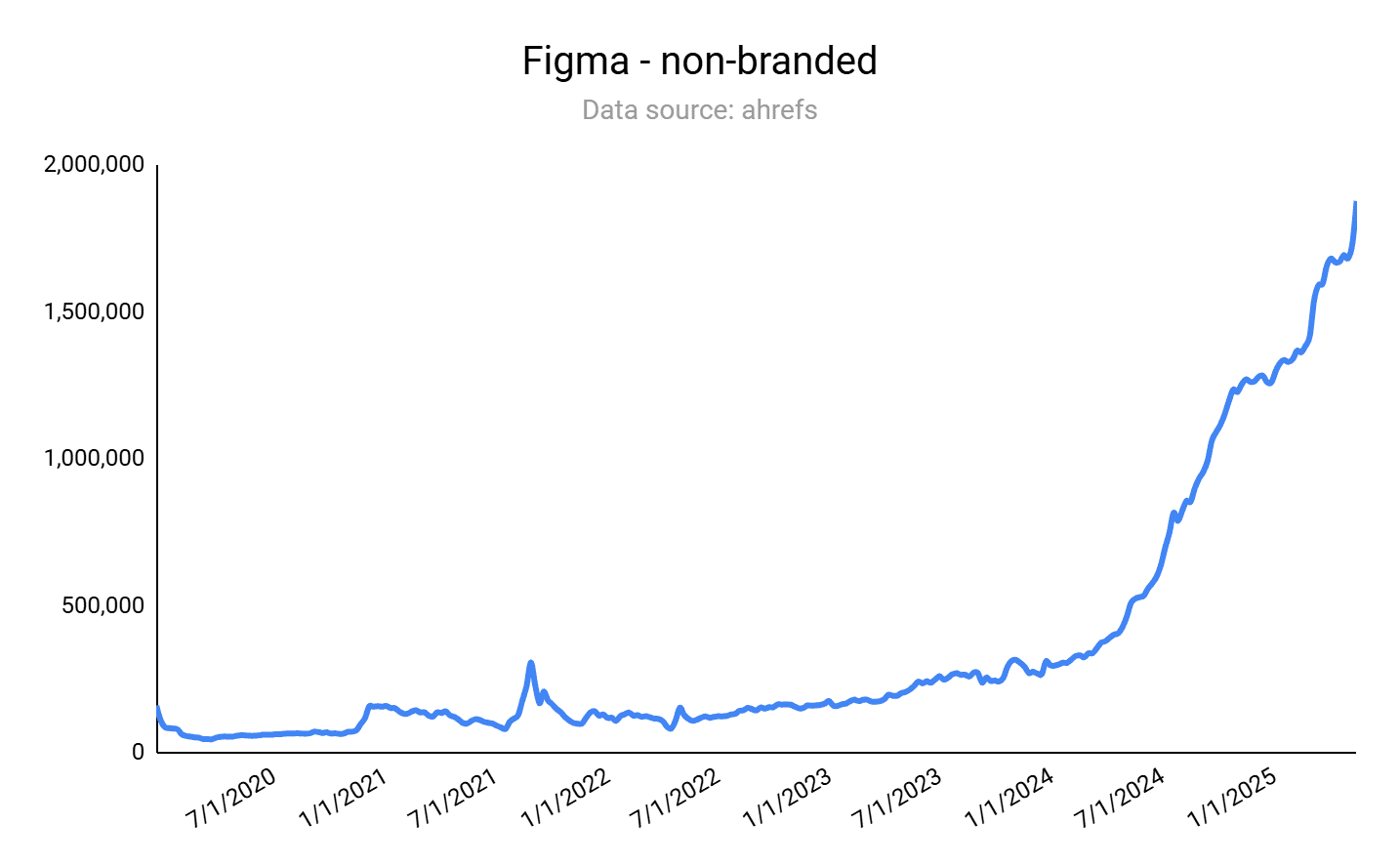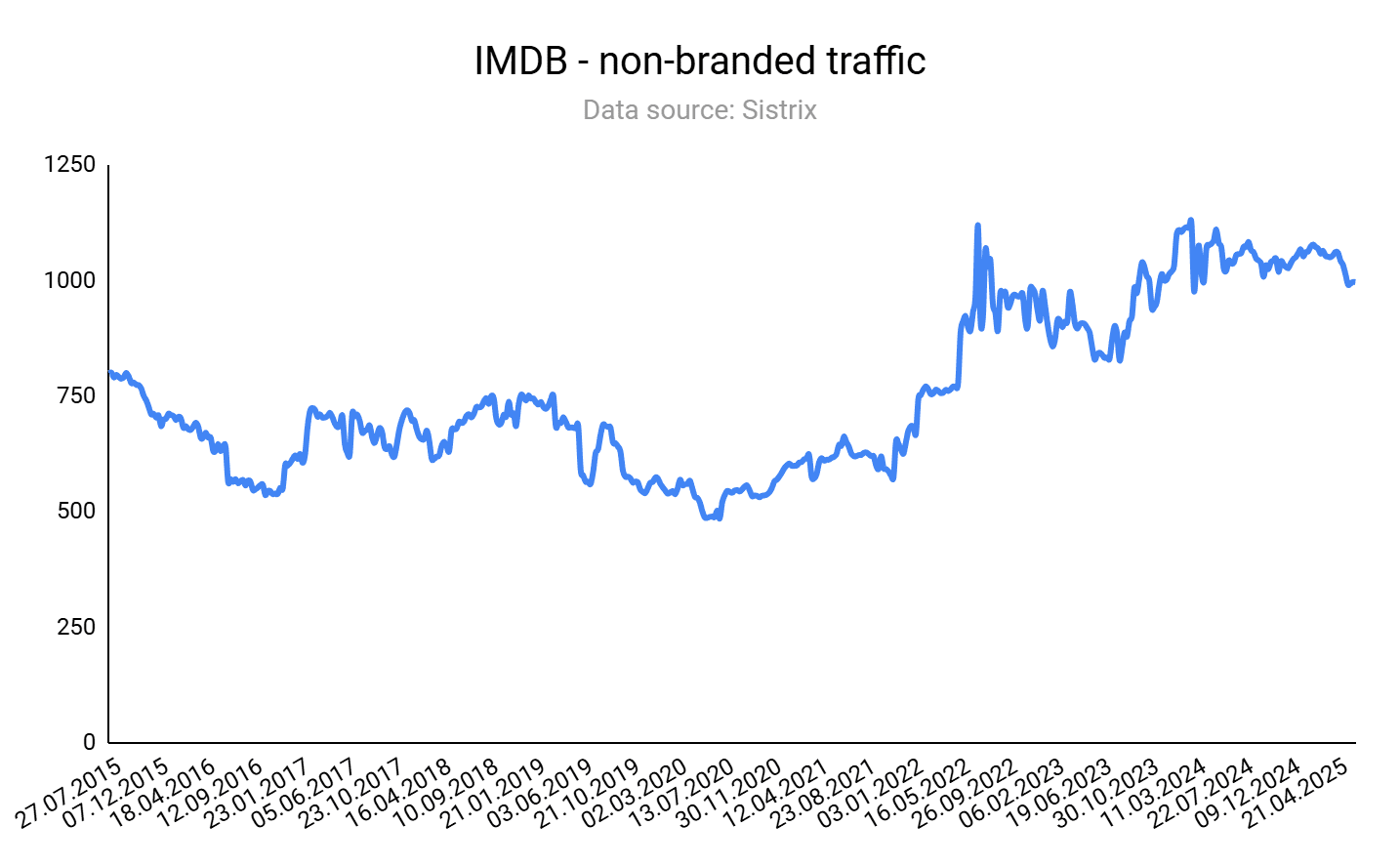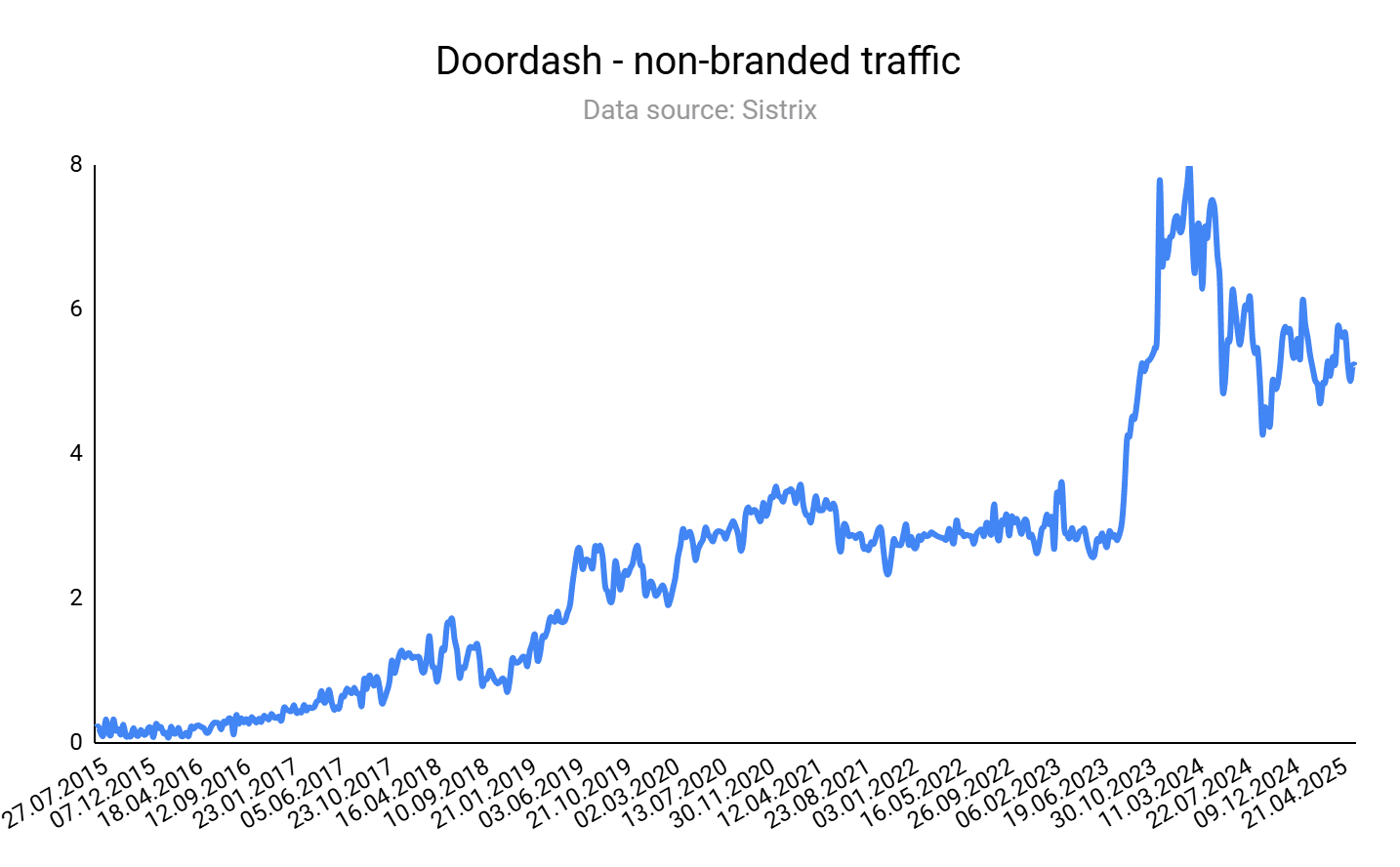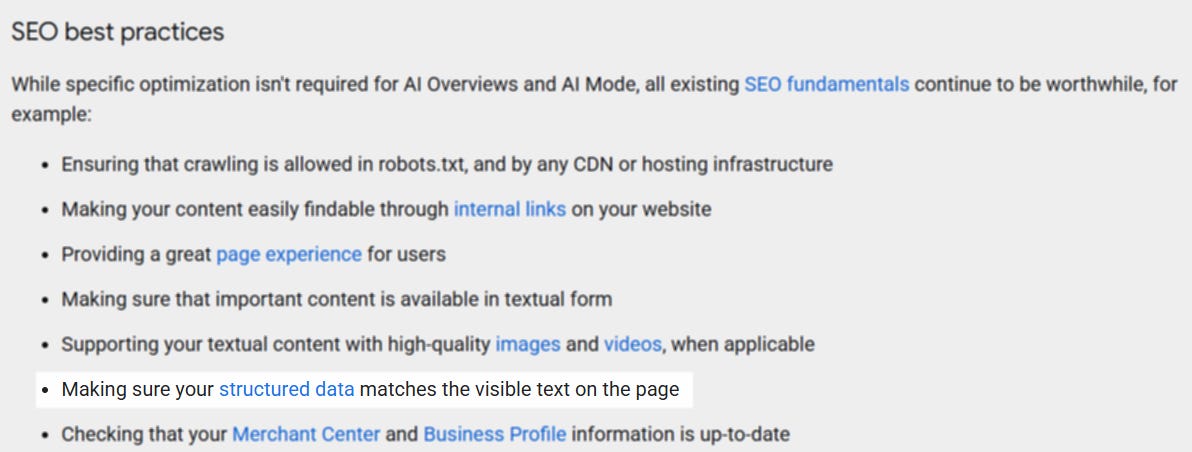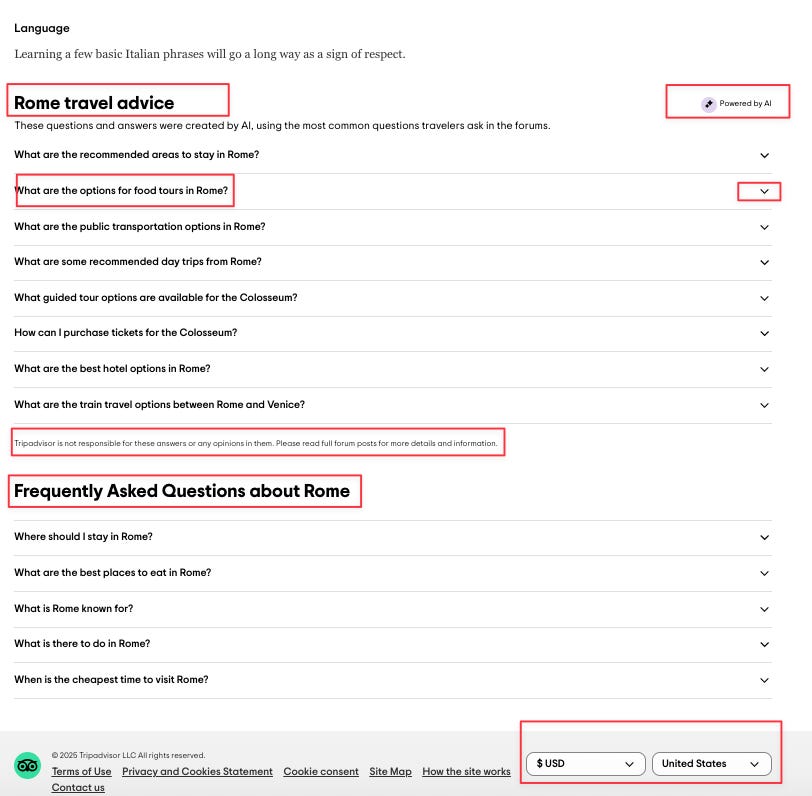Google AI Mode: First Thoughts & Survival Strategies
The new AI Mode tab in Google’s results, currently only active in the U.S., enables users to get an AI-generated answer to their query.
You can ask a detailed question in AI Mode, and Google will provide a summarized answer.
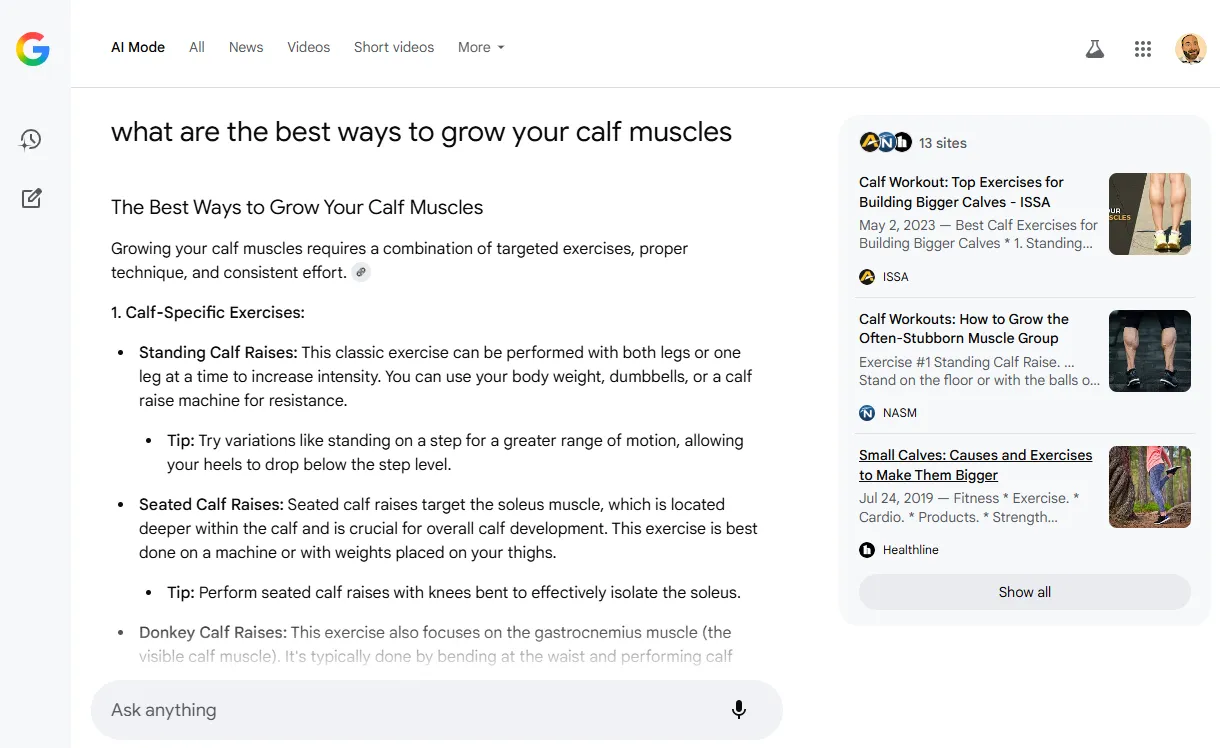 Google AI Mode answer for the question [what are the best ways to grow your calf muscles], providing a detailed summary of exercises and tips (Image Credit: Barry Adams)
Google AI Mode answer for the question [what are the best ways to grow your calf muscles], providing a detailed summary of exercises and tips (Image Credit: Barry Adams)Google explains how it generates these answers in some recently published documentation.
The critical process is what Google calls a “query fan-out” technique, where many related queries are performed in the background.
The results from these related queries are collected, summarized, and integrated into the AI-generated response to provide more detail, accuracy, and usefulness.
Having played with AI Mode since its launch, I have to admit it’s pretty good. I get useful answers, often with detailed explanations that give me the information I am looking for. It also means I have less need to click through to cited source websites.
I have to admit that, in many cases, I find myself reluctant to click on a source webpage, even when I want additional information. It’s simpler to ask AI Mode a follow-up question rather than click to a webpage.
Much of the web has become quite challenging to navigate. Clicking on an unknown website for the first time means having to brave a potential gauntlet of cookie-consent forms, email signup pop-ups, app install overlays, autoplay videos, and a barrage of intrusive ads.
The content you came to the page for is frequently hidden behind several barriers-to-entry that the average user will only persist with if they really want to read that content.
And then in many cases, the content isn’t actually there, or is incomplete and not quite what the user was looking for.
AI Mode removes that friction. You get most of the content directly in the AI-generated answer.
You can still click to a webpage, but often it’s easier to simply ask the AI a more specific follow-up question. No need to brave unusable website experiences and risk incomplete content after all.
AI Mode & News
Contrary to AI Overviews, AI Mode will provide summaries for almost any query, including news-specific queries:
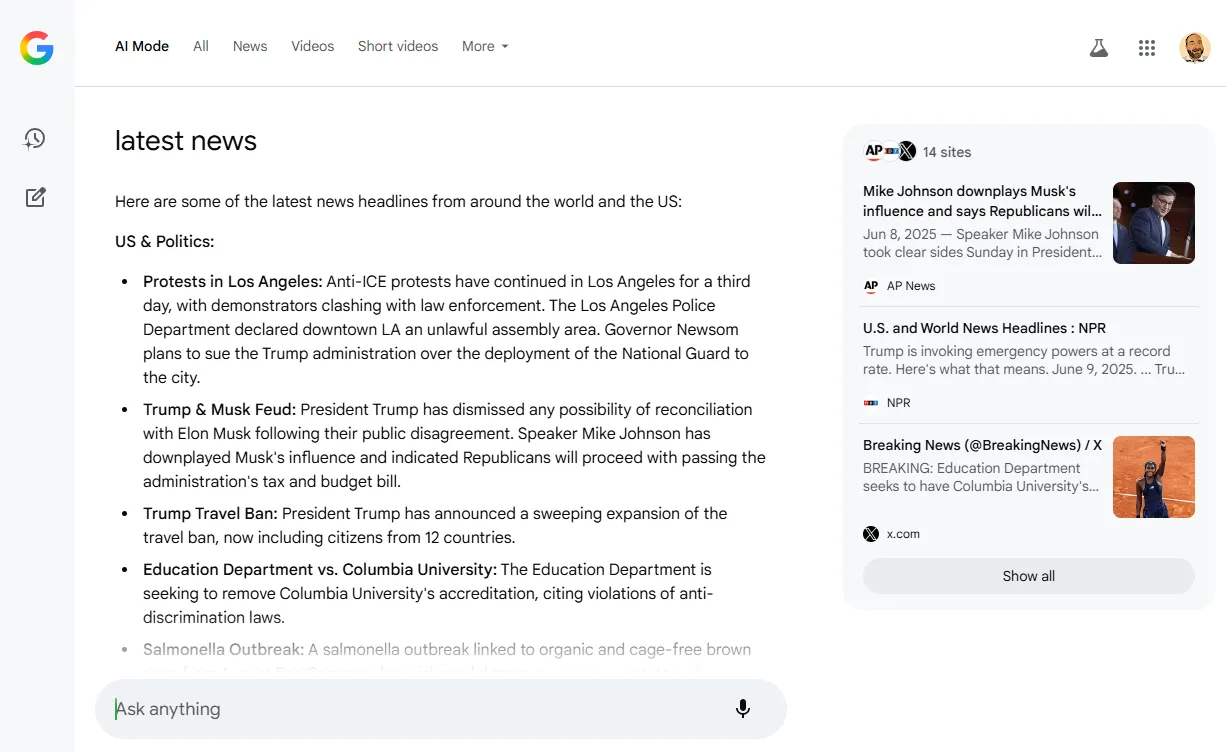


Playing with AI Mode, I’ve seen some answers to news-specific queries that don’t even cite news sources, but link only to Wikipedia.
For contrast, the regular Google SERP for the same query features a rich Top Stories box with seven news stories.
With these types of results in AI Mode, the shelf life of news is reduced even further.
Where in search, you can rely on a Top Stories news box to persist for a few days after a major news event, in AI Mode, news sources can be rapidly replaced by Wikipedia links. This further reduces the traffic potential to news publishers.
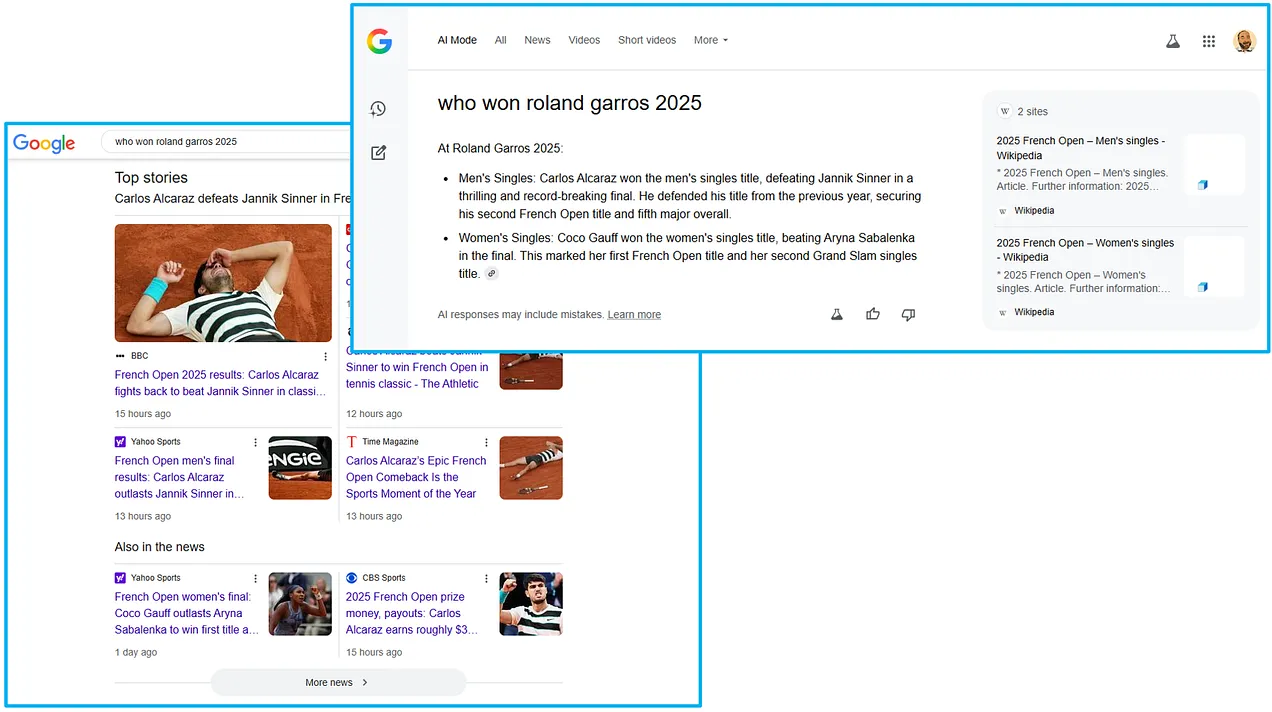


There is some uncertainty about AI Mode’s traffic impact. I’ve seen examples of AI Mode answers that provide direct links to webpages in-line with the response, which could help drive clicks.
Google is certainly not done experimenting with AI Mode. We haven’t seen the final product yet, and because it’s an experimental feature that most users aren’t engaged with (see below), there’s not much data on CTR.
As an educated guess, the click-through rate from AI Mode answers to their cited sources is expected to be at least as low, and probably lower, as the CTR from AI Overviews.
This means publishers could potentially see their traffic from Google search decline by 50% or more.
AI Mode User Adoption
The good news is that user adoption of AI Mode appears to be low.
The latest data from Similarweb shows that after an initial growth, usage of the AI Mode tab on Google.com in the U.S. has slightly dipped and now sits at just over 1%.
This makes it about half as popular as the News tab, which is not a particularly popular tab within Google’s search results to begin with.
It could be that Google’s users are satisfied with AI Overviews and don’t need expanded answers in AI Mode, or that Google hasn’t given enough visual emphasis to AI Mode to drive a lot of usage.
I suspect that Google may try to make AI Mode more prominent, with perhaps allowing users to click from an AI Overview into AI Mode (the same way you can click from a Top Stories box to the News tab), or integrate it more prominently into their default SERP.
When user adoption of AI Mode increases, the impact will be keenly felt by publishers. Google’s CEO has reiterated their commitment to sending traffic to the web, but the reality appears to contradict that.
In some of their newest documentation about AI, Google strongly hints at diminished traffic and encourages publishers to “[c]onsider looking at various indicators of conversion on your site, be it sales, signups, a more engaged audience, or information lookups about your business.”.
AI Mode Survival Strategies
Broad adoption of AI Mode, whatever form that may take, can have several impactful consequences for web publishers.
Worst case scenario, most Google search traffic to websites will disappear. If AI Mode becomes the new default Google result, expect to see a collapse of clicks from search results to websites.
Focusing heavily on optimizing for visibility in AI answers will not save your traffic, as the CTR for cited sources is likely to be very low.
In my view, publishers have roughly three strategies for survival:
1. Google Discover
Google’s Discover feed may soften the blow somewhat, especially with the rollout onto desktop Chrome browsers.
Expanded presence of Discover on all devices with a Chrome browser gives more opportunities for publishers to be visible and drive traffic.
However, a reliance on Discover as a traffic source can encourage bad habits. Disregarding Discover’s inherent volatility, the unfortunate truth is that clickbait headlines and cheap churnalism do well in the Discover feed.
Reducing reliance on search in favor of Discover is not a strategy that lends itself well to quality journalism.
There’s a real risk that, in order to survive a search apocalypse, publishers will chase after Discover clicks at any cost. I doubt this will result in a victory for content quality.
2. Traffic & Revenue Diversification
Publishers need to grow traffic and income from more channels than just search. Due to Google’s enormous monopoly in search, diversified traffic acquisition has been a challenge.
Google is the gatekeeper of most of the web’s traffic, so of course we’ve been focused on maximising that channel.
With the risk of a greatly diminished traffic potential from Google search, other channels need to pick up the slack.
We already mentioned Discover and its risks, but there are more opportunities for publishing brands to drive readers and growth.
Paywalls seem inevitable for many publishers. While I’m a fan of freemium models, publishers will have to decide for themselves what kind of subscription model they want to implement.
A key consideration is whether your output is objectively worth paying for. This is a question few publishers can honestly answer, so unbiased external opinions will be required to make the right business decision.
Podcasts have become a cornerstone of many publishers’ audience strategies, and for good reason. They’re easy to produce, and you don’t need that many subscribers to make a podcast economically feasible.
Another content format that can drive meaningful growth is video, especially short-form video that has multiplatform potential (YouTube, TikTok, Instagram, Discover).
Email newsletters are a popular channel, and I suspect this will only grow. The way many journalists have managed to grow loyal audiences on Substack is testament to this channel’s potential.
And while social media hasn’t been a key traffic driver for many years, it can still send significant visitor numbers. Don’t sleep on those Facebook open graph headlines (also valuable for Discover).
3. Direct Brand Visits
The third strategy, and probably the most important one, is to build a strong publishing brand that is actively sought out by your audience.
No matter the features that Google or any other tech intermediary rolls out, when someone wants to visit your website, they will come to you directly. Not even Google’s AI Mode would prevent you from visiting a site you specifically ask for.
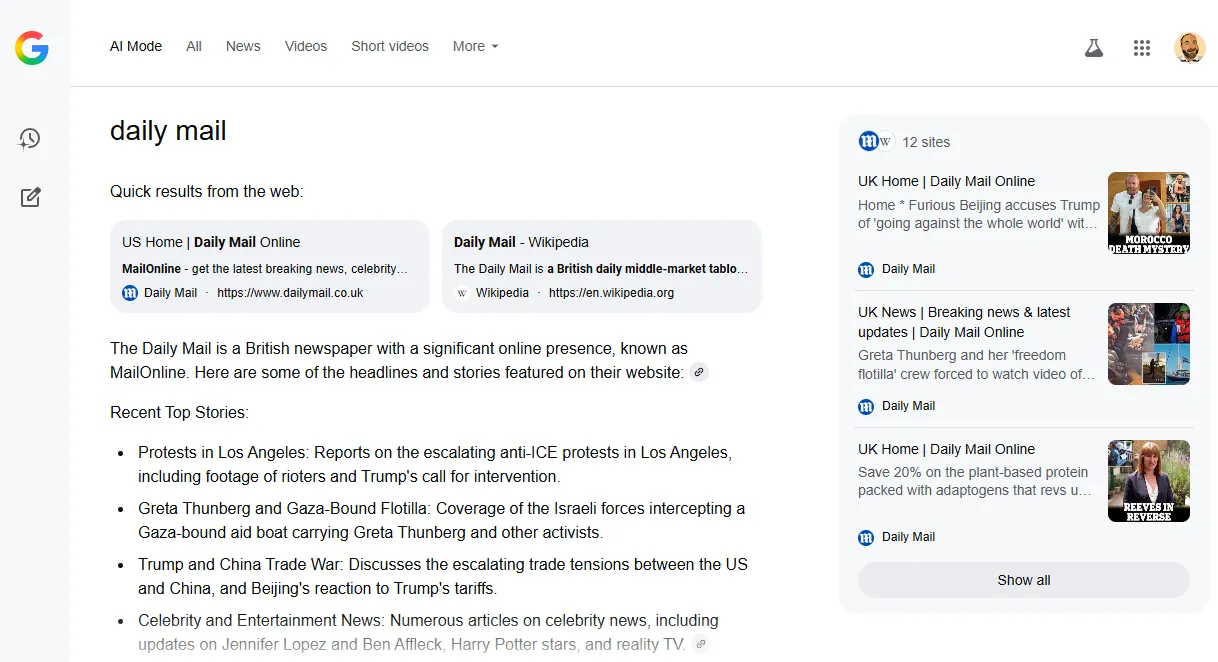


Brand strength translates into audience loyalty.
A recognizable publisher will find it easier to convince its readers to install their dedicated app, subscribe to their newsletters, watch their videos, and listen to their podcasts.
A strong brand presence on the web is also, ironically, a cornerstone of AI visibility optimization.
LLMs are, after all, regurgitators of the web’s content, so if your brand is mentioned frequently on the web (i.e., in LLMs’ training data), you are more likely to be cited as a source in LLM-generated answers.
Exactly how to build a strong online publishing brand is the real question. Without going into specifics, I’ll repeat what I’ve said many times before: You need to have something that people are willing to actively seek out.
If you’re just another publisher writing the same news that others are also writing, without anything that makes you unique and worthwhile, you’re going to have a very bad time. The worst thing you can be as a publisher is forgettable.
There is a risk here, too. In an effort to cater to a specific target segment, a publisher could fall victim to “audience capture“: Feeding your audience what they want to hear rather than what’s true. We already see many examples of this, to the detriment of factual journalism.
It’s a dangerous pitfall that even the biggest news brands find difficult to navigate.
Optimizing For AI
In my previous article, I wrote a bit about how to optimize for AI Overviews.
I’ll expand on this in future articles with more tips, both technical and editorial, for optimizing for AI visibility.
More Resources:
This post was originally published on SEO For Google News.
Featured Image: BestForBest/Shutterstock


